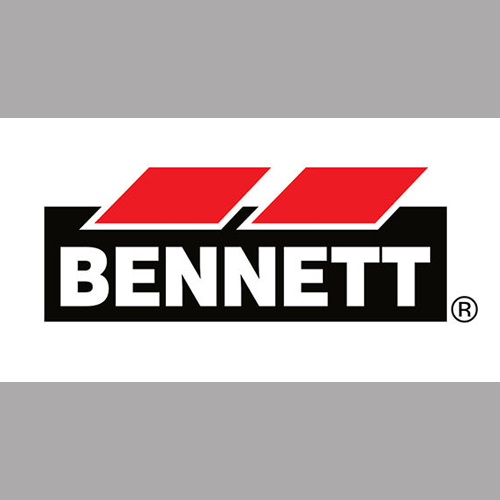Most interiors tend to be covered with gypsum wallboard aka drywall or Sheetrock. It is solid yet very easy to indent or poke holes in and will turn to mush once water damage happens. Living with people and pets can potentially cause accidental destruction. Simply having a doorknob make contact with the drywall can leave a ring of damage or maybe a hole if nothing prevents contact.
Among the unappealing damaged drywall list consists of peeling joint tape, cracks, holes, and dents. These issues need to be fixed properly before applying fresh paint. It is possible to fix most sheetrock problems. With the right hand tools and equipment and products plus a little know-how, you can certainly fix the damaged areas.
Safety is the primary dialogue for any DIY project. It isn’t that tough to fix sheetrock problems but vital to learn the proper safety method prior to fixing window cracks, saggy roofs and doorknob scars.
Back Care Is Important With Drywall Repairs
Careful heavy lifting is essential, or else you will be in pain. Tiny drywall repairs can be found in 2-foot square pieces or there are 4x8' sheets for sale. Contractors normally purchase in bulk and cut down to the sizes they desire. Plan your drywall transport accurately considering that the average weight of ½-inch drywall weighs 54 lbs.
Plan your pickup and delivery accordingly by hiring help in advance. Make sure to protect your back by lifting with your knees and never with your back. Do not plan on carrying drywall by yourself. Take care when leaning pieces against a wall as they can fall over and crush pets and children.
Don’t Leave Empty Buckets Unsupervised Around Kids
While you can buy premixed joint compound in a variety of different bucket sizes, many opt for 5-gallon buckets. These are a harmful threat to young tots and small kids. Children can lean over and fall into the container by accident while peering inside. Regrettably, kids can drown in only one inch of water when they become trapped in the bucket. Always turn buckets upside-down when they are not being used to prevent rainwater accumulation. Drilling holes in buckets that are used primarily for carrying instead of mixing is an simple safety precaution.
Remove Drywall Dust
Any time you sand the joint compound down, it creates layers of annoying dusty particles. This is made up of minute gypsum particles and silica, which makes it a respiratory irritant. This generates a respiratory irritant since it is full of fine particulate material including gypsum and silica. Working in a well-ventilated location minimizes your chance of breathing in particles.
Have a person close with a shop vac to trap dust when you are sanding. Make sure that your shop vacuum is certified with a HEPA filtration system. IRemove even more dust after with your household vacuum. After that, wet-dust base boards, displays, window ledges as well as the fireplace mantle then mop all floors to pick up more drywall dust. If your sanding will occur near any heater vents in the wall or floor, tape them off with newspaper or a drop cloth when you begin to prevent dust from entering there and blowing out later once the heat turns on.
Know What Compound You Require
There are a couple of main types of premixed drywall compounds. The all-purpose and lightweight products perform differently. In comparison to the all-purpose compound, the light-weight product requires less drying time and weighs less than the all-purpose kind. It requires less effort for sanding. The all-purpose version is less expensive and dries harder.
Both compounds are really simple to apply. For an estimated nine months, these joint compound items will last at room temperature. Buy the 5-gallon bucket if you have many repairs to do.
There is a dry-mix joint compound available too. This powdery product calls for mixing with water until it is the right consistency prior to applying. The dry-mix compound is the most cost-effective version compared to the pre-mixed options. The premix version is faster and easier to apply; especially for DIY choices.
Common Doorknob Damage
All of us have seen harm due to doorknobs. Opening a door too aggressively can lead to unattractive indents, spherical or semi-circular that occur, or maybe a hole from the doorknob hitting the drywall. Even if the door opens lightly, these indents can occur if there is no stopper for protection. Simple solutions include peel-and-stick maintenance patches. This patch posseses an adhesive-backed screen of aluminum which is reinforced with fibreglass mesh. These are actually formulated for easy application. Simply peel off the backing and press the patch across the hole.
Take a four to six-inch-wide sheetrock knife and put the joint compound on top of the patch. Use enough pressure to gently drive the compound through the mesh. Once it has dried, lightly sand and then incorporate another thinner coat of compound. Stretch the second coat beyond the first coat by a few inches. Do this process a third time and after everything has dried, lightly sand the surface. Once it is seamless and even, it's time to prime and paint.
Drywall Cracks
It is not uncommon to see drywall cracks below or above doors and windows. These hairline splits are usually caused by lumber shrinkage and settling inside the house frame. Start with a sanding sponge to sand the crack smoothly. After sanding is finished, vacuum the crack to control all debris and dust.
Beneath and over doors and windows are key locations to look for drywall cracks. These vertical splits tend to be caused by your house frame settling due to lumber shrinkage. The splits can easily be repaired with a sanding sponge. Sand them smooth and vacuum the crack to clean it well. Use a putty knife to place a slim coat of joint compound inside the crack. Once it is dry, sand it smooth. Repeat the process by using a second thin coat. After the repair is complete and flush along with the rest of the drywall, you are ready for priming and painting.




